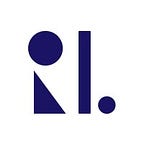All About the Eye Test Chart
In the days of online classes and work happening all through the day, adults and children alike are facing very similar issues that are caused by too much strain to the eyes due to a prolonged screen time. Gone are the days when screen time was solely saved for movies, or binge watching serials or your favorite cartoons, the pandemic has made it a vital part of our livelihoods and maintaining safety as well.
With a prolonged screen time becoming the norm, it is understandable that many young children have needed visits to doctors to get their eyes tested. So has this ever made you wonder, how these tests actually work? How reading alphabets off of a chart from a distance allows the doctors to gauge your vision impairment? Well, let’s find out!
This particular chart, with it’s range of differently sized alphabetical arrangements, is known as the Snellen chart. It was named after the Dutch ophthalmologist, Dr. Herman Snellen, who developed the chart in the year of 1862. The initial version created by Dr. Snellen contained both alphabets and numerical in a grid with the numbers being 5, 4, 3, 2, which were spaced out between the alphabets.
What this chart does is, it tells the doctors how well a patient can see without glasses there by allowing for the accurate testing of one’s vision acuity. The alphabets are arranged in 11 rows, with larger sized alphabets at the top and smaller ones towards the bottom, with the number of letters increasing towards the end due to its small size.
While testing the visual acuity in a person, one eye of the patient is covered with the hand, and the letters are read out with the other eye as far as their vision permits. Same is repeated for the closed eye and then again with both the eyes open together.
People with a 6/6 vision can read the chart easily enough and for the others, lenses are provided to obtain similarly sharp vision according to their need. What the numbers 6/6 means is the viewer can easily view objects that are 6 meters away from them, other numbers like 6/12 for example, would mean that the viewer can only view objects that people with normal vision can view 12 meters away, at 6 meters.
There are different types of reading charts available to aid with eye testing, they include, the random E test where E’s are arranged in various sizes facing various directions, and the viewer has to say out loud which directions they are facing. Some charts also make use of images rather than alphabets for kids.
With these charts and our modern day technologies, determining vision impairment has become much easier! So kids and parents, keep an eye on your eyes because they help you see the whole beautiful world out there!
